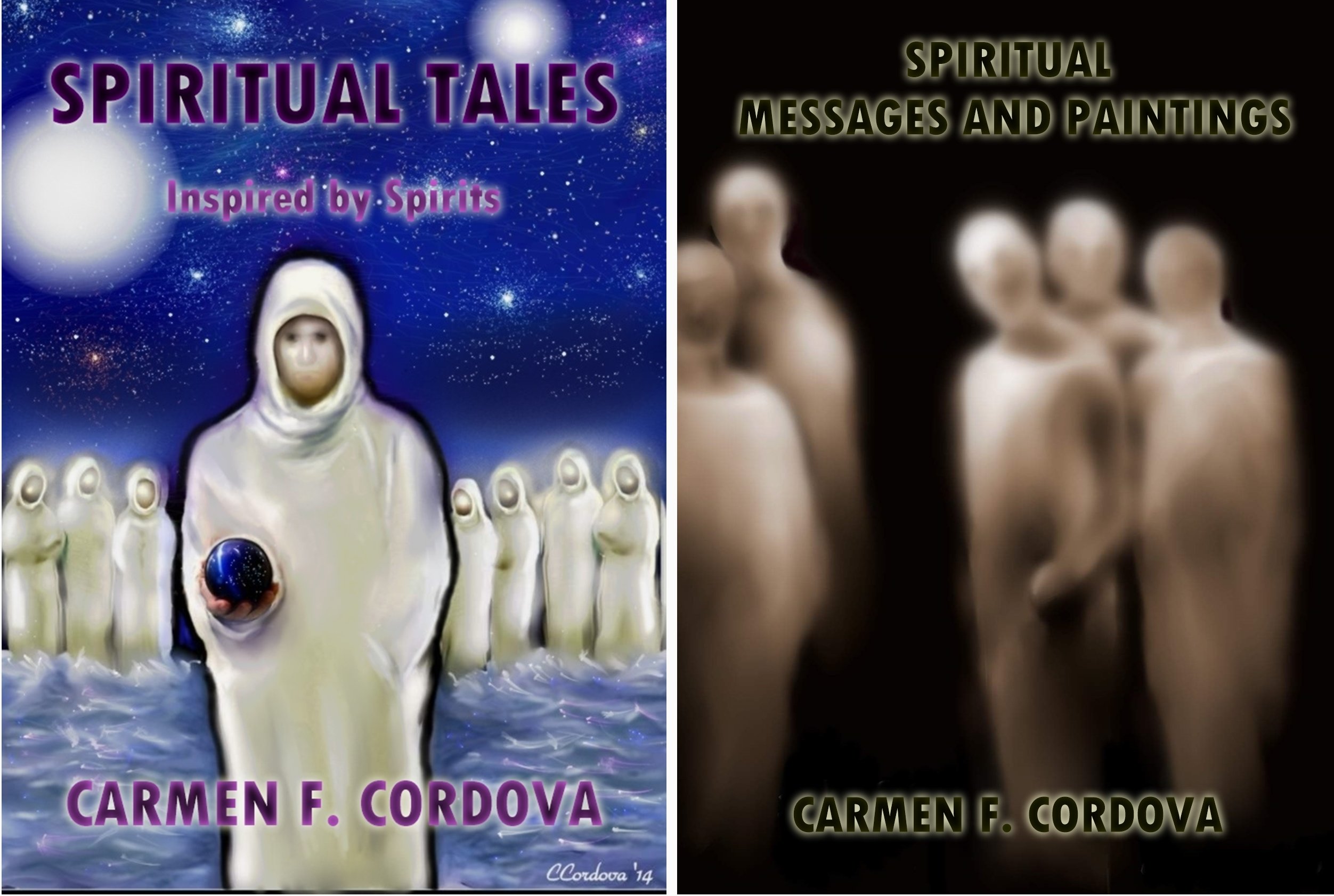Orisha Gods and Goddesses
Artwork and Information
Orisha Gods and Goddesses
Introduction to Orishas and the Yoruba Religion
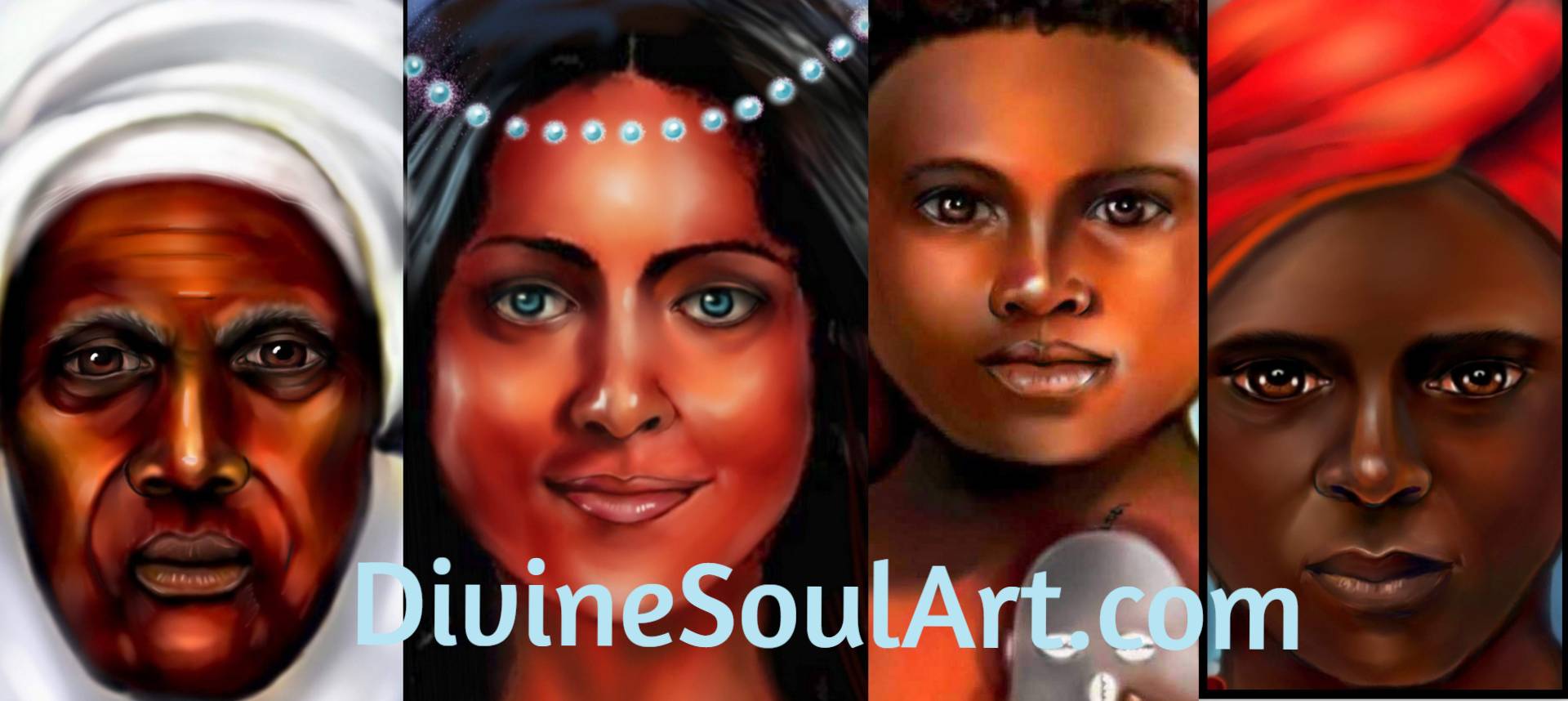 orisha pantheon
orisha pantheonSanteria Practices
Welcome to the page dedicated to some of the Orisha Gods and Goddesses- Yoruba Deities! Here, you can explore various artworks featuring the Orishas, the Gods, and Goddesses of Santeria, along with a brief summary of each one. These deities are central to many religious practices, which include diverse rituals and ceremonies that blend Yoruba religion Orisha beliefs with elements of Catholicism.
Santería is a fascinating syncretic religion that emerged in Cuba, blending the rich traditions of the Yoruba religion from West Africa with elements of Catholicism. Central to Santería are the Orishas (african deities), a diverse orisha pantheon of gods and goddesses who personify various aspects of human world and the natural world. These deities play a crucial role in the spiritual practices and daily lives of Santería and other Afro religions followers.
The history of Santería is deeply intertwined with the transatlantic slave trade, which brought the west Africa Yoruba people and Yoruba beliefs to the Caribbean. Despite the oppressive conditions, the Yoruba people managed to preserve their own religion by merging their original beliefs with the Catholic religion practiced by their captors. This fusion gave birth to Santería, a religion that honors both the Orishas and Catholic saints.
Santería is characterized by its vibrant ceremonies, rituals, and offerings, all aimed at appeasing the Orishas and seeking their guidance. Practitioners believe that by maintaining a harmonious relationship with the Orishas, they can achieve spiritual growth, balance, and protection in their lives. The Orishas are not distant deities but are believed to interact closely with human beings, influencing their destinies and providing support in times of need.
Orishas and the Catholic Church
The relationship between Orishas and the Catholic Church is a fascinating tapestry of syncretism and cultural blending. In Afro-Caribbean cultures, particularly in Cuba, the Orishas are often syncretized with Catholic saints, creating a unique fusion of religious practices. This syncretism allows practitioners to honor both their African heritage and their Catholic faith, resulting in a rich and multifaceted spiritual landscape.
For instance, the powerful Orisha Chango, known as the Orisha of thunder and lightning, is often associated with Saint Barbara due to their similar characteristics. This blending of belief systems enables followers to navigate their spiritual lives with a sense of continuity and respect for both traditions.
In Cuba, the Catholic Church has played a significant role in shaping the country’s religious practices. Many Cubans practice a form of Santería that incorporates elements of Catholicism, such as the veneration of saints and the use of Catholic rituals. Despite the Catholic Church’s occasional criticism of Santería as a form of “folk witchcraft,” many practitioners continue to identify as Catholic and attend Catholic churches.
The syncretism between Orishas and Catholic saints exemplifies the resilience and adaptability of African religions in the face of colonialism and oppression. It also underscores the deep connections between different belief systems and the ways in which they can coexist and enrich one another.
Orishas Gods and Goddesses
The Yoruba pantheon is a rich tapestry of African deities, each with unique attributes, powers, and domains. Among the most revered Orishas are:
- Obatalá: The god of wisdom, peace, and creation. He is often depicted in immaculate white garments, symbolizing purity and clarity of mind.
- Yemayá: The goddess of the ocean, motherhood, and fertility. She is seen as the nurturing mother of all living beings and is associated with the sea and its life-giving properties.
- Oshún: The goddess of love, beauty, and sensuality. She embodies the sweetness of life and is often invoked in matters of the heart and fertility.
- Changó: The god of thunder, lightning, and passion. He represents raw power, courage, and the fiery aspects of human nature. He is also know as the warrior king.
- Eleggua: The god of crossroads, communication, and mischief. He is the gatekeeper who opens and closes the paths of life, ensuring that ceremonies begin and end with his blessing.
- Oya: The goddess of storms, lightning, and wind. She is seen as a symbol of strength, bravery, and guidance.
These Orishas are believed to be deeply involved in the lives of human beings, guiding their actions and shaping their destinies. Santería practitioners honor these Yoruba deities through various rituals and offerings, seeking to maintain a balanced and harmonious existence. By venerating the Orishas, followers of Santería aim to achieve spiritual enlightenment and a deeper connection with the divine Supreme God.
An interesting aspect of the orisha in Yoruba religion is the twin orisha known as Ibeji. In Yoruba mythology, Ibeji share one soul and are associated with joy, happiness, mischief, fertility and prosperity. It is believed that Ibeji are the children of Shango and Yemaya.
Getting a Personal Look at the Orishas
In this section, we will take a closer look at two of the most revered Orishas in Santería, Oshún, and Yemayá, among others.
OSHUN-THE GODDESS OF LOVE
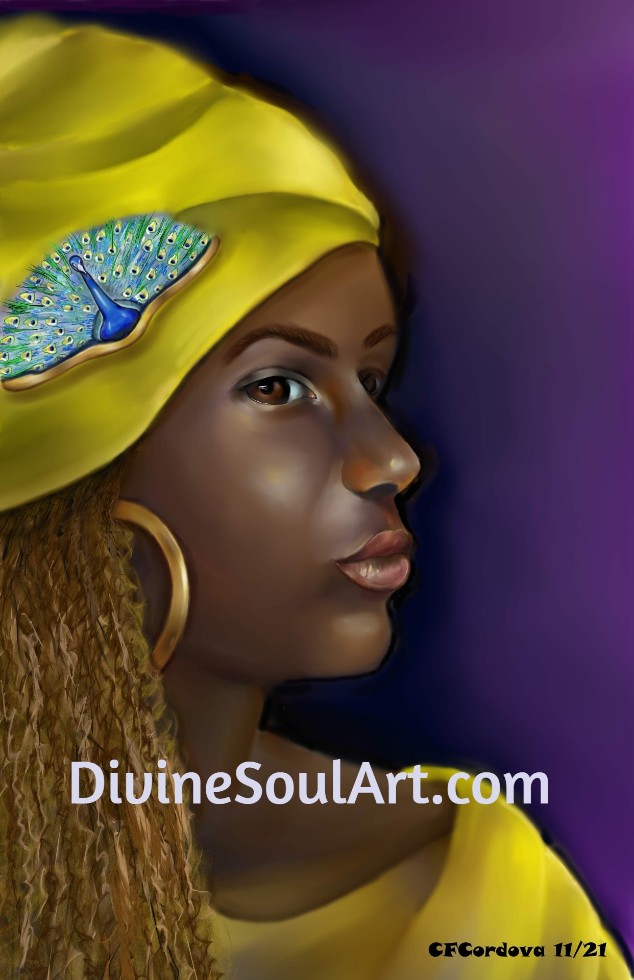
Oshún, also known as Ochun or Oxum, is the enchanting goddess of love, beauty, and sensuality. Often depicted as a radiant woman adorned with peacock feathers and honey, she embodies the essence of romance and fertility. Oshún is revered as the patron saint of love, relationships, and marriage, and her influence is sought to bring people together, resolve conflicts, and ignite passion.
In Santería ceremonies, Oshún is frequently invoked to aid individuals in finding love, mending broken relationships, and enhancing their emotional well-being. Her sacred symbols, such as the peacock, mirror, and fan, reflect her association with beauty, vanity, and seduction. Devotees offer her honey, oranges, and cinnamon, believing that these gifts will earn her favor and blessings.
Oshun has been syncretized with the Catholic saint Our Lady of Charity, or La Virgen de la Caridad del Cobre (Our Lady of Charity is considered the patron saint of Cuba, revered for her protection and influence.)
This blending of religious beliefs exemplifies how the Catholic religion has had an influence on Santería, enabling followers to equate Catholic saints with African Orishas.
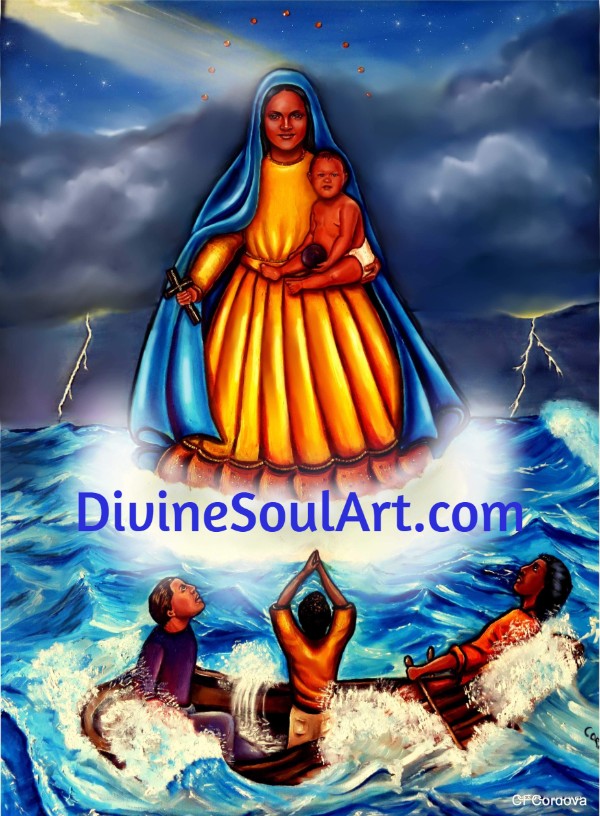
In addition, she is associated with various aspects, such as river waters, love, fertility, marriage, beauty, wealth, art, and sensuality. Additionally, she is known for being generous, kind, desirable, ambitious, seductive, self-centered and flirtatious.
In the Yoruba religion, Oshun is associated with the abdominal area. If someone is experiencing issues in that area, it is recommended to seek Oshun's help. Women who desire to have children also ask for Oshun's aid, as it is believed that she grants the wishes of those who are deserving.
Oshun is considered to be Chango's favored wife and Yemaya's younger sister, although some versions of the story portray Yemaya as her mother. According to folktales, Obatala is her father.
Her feast day is on September 8, and her associated color is yellow. According to Luisah Teish's Jambalaya- The Nature Woman's Book. she is often associated with a new crescent moon, Venus, and her day of the week is Saturday, with her associated number being five.
Altars dedicated to Oshun typically include a mirror, a fan, a piece of coral, gold, copper, and a tortoiseshell comb. Offerings to Oshun may consist of honey cakes, pumpkins, and honey, among other items.
YEMAYA- GODDESS OF THE OCEAN
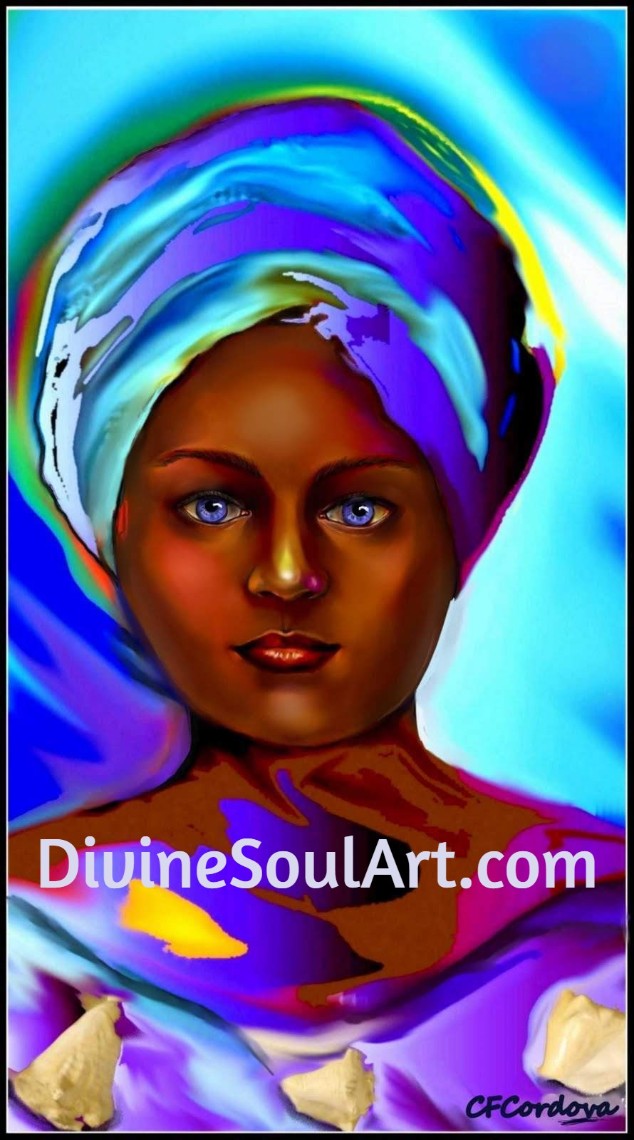
In Santería, Yemaya has been syncretized with Our Lady of Regla.
Our Lady of Regla
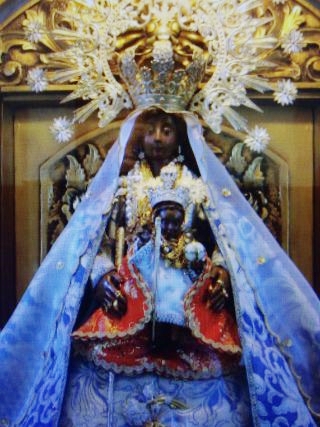
Yemayá, the majestic goddess of the ocean, motherhood, and fertility, is a powerful and nurturing figure in the Yoruba pantheon. She is often depicted surrounded by the sea and marine life, symbolizing her dominion over the waters and her role as the mother of all living beings. Yemayá is honored as the patron saint of the ocean, sailors, and fishermen, and her blessings are sought for protection, prosperity, and good fortune.
In Santería ceremonies, Yemayá is invoked to help individuals navigate life’s challenges, find emotional balance, and connect with their intuition. Yemayá plays a crucial role in santería initiation, guiding initiates through the transformative process and helping them cultivate a deep spiritual connection with their assigned orisha. Her sacred symbols, including the shell, fish, and anchor, represent her deep connection to the ocean and her stabilizing influence. Offerings to Yemayá often include watermelon, molasses, and white flowers, which are believed to please her and secure her guidance.
Her feast day is September 7, colors are blue, white and sometimes crystal, day of the week is Saturday, and number is seven.
Planets associated with Yemaya are full moon and Neptune.
She is the adopted mother of Chango, and older sister of Oshun. As mentioned above, she is sometimes depicted as Oshun's mother.
Her favorite foods are watermelon, sugar cane syrup, and cornmeal.
On New Year’s Eve, in Rio de Janeiro, Brazil, an innumerable amount of people, dressed in white, gather around Copacabana beach to pay homage to Yemaya. Offerings of flowers are thrown into the sea in hope that she will grant their requests for the upcoming year.
According to David St. Clair, Drum and Candle, Yemaya was the daughter of Obatala and Odudua- the black Adam and Eve. In addition to Yemaya, they had a son called Aganju. Yemaya and Aganju married each other and had a son called Orungan. As the son got older, his sexual feeling for his mother began to develop- similar to Freud’s Oedipus Complex. When the father was away, Orungan revealed his feelings to Yemaya. Shocked with Orungan’s revelation, she tried to run away. Unsuccessful in her attempt to escape, Orungan threw her on the ground and raped her.
Feeling disgusted and ashamed with what had transpired, Yemaya escaped to the jungle. With a growing belly, “she fell onto her back and from her breast came two streams of water, which quickly formed a great lake. Then her womb burst open and out came the hierarchy of Yoruba Orishas…she also gave birth to the sun and moon.”
She is known as the mother of everything. “Her name comes from Yeme, meaning mother, and Eja, meaning fish. Thus, she was the mother of all the fish and the mother of the waters.”

Click here to view or purchase Orishas Art
OBATALA- THE KING OF THE WHITE CLOTH
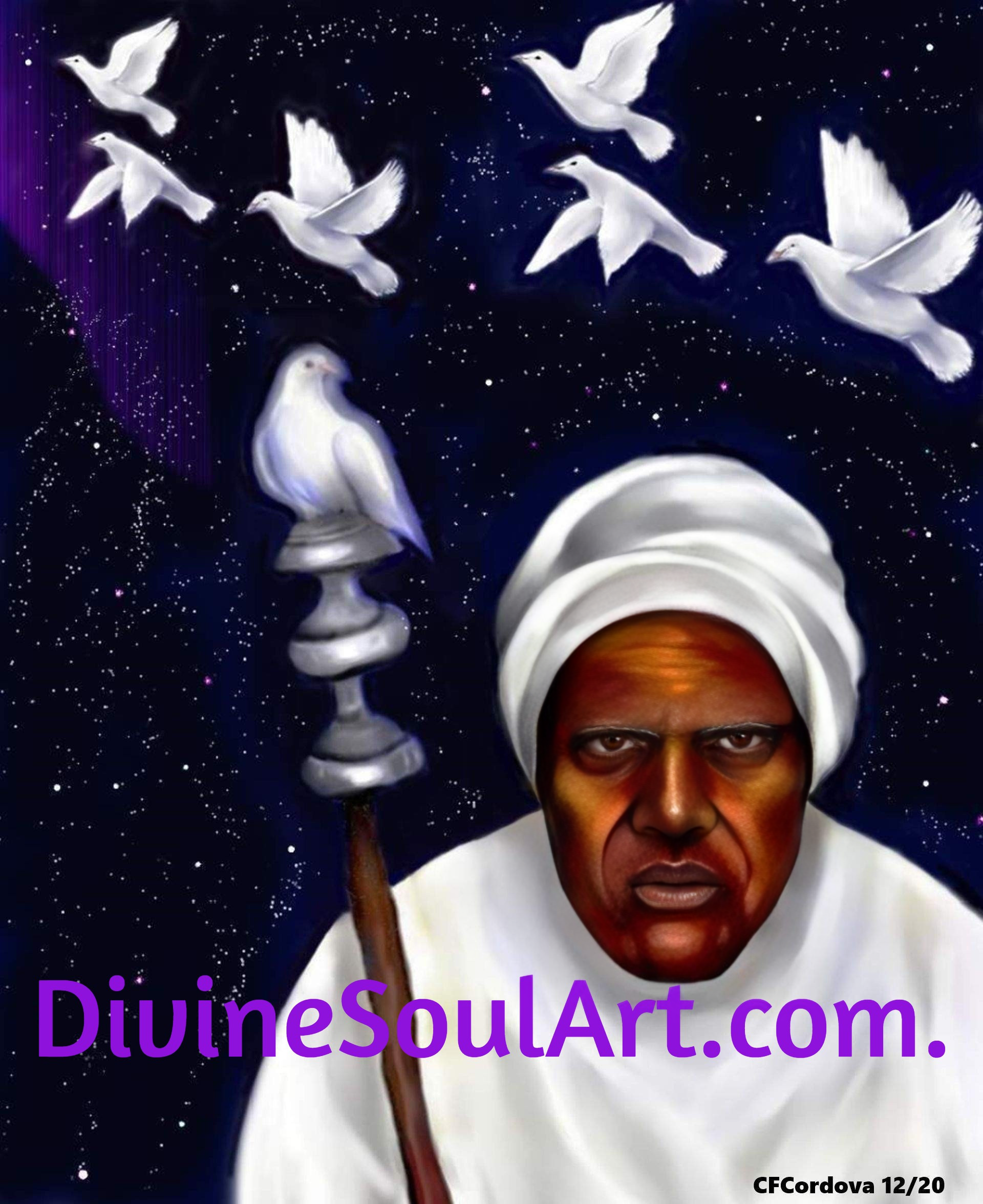
In Santeria, Obatala is associated with Our Lady of Mercy or Las Mercedes.
Our Lady of Mercy/ Virgen de las Mercedes
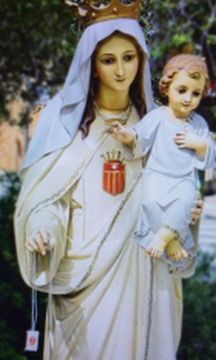
Obatala is the oldest of all orishas. Legend states that God sent Obatala to the planet Earth to create life and govern all.
He represents wisdom, peace, fatherhood, purity, generosity, sternness, and kindness.
He is the King of the White Cloth. This is due to him being dressed in impeccable white clothes.
He likes calmness, cleanliness and order. Although he loves his children, he demands respect and obedience.
Migene Gonzalez-Wippler, in her book, Santeria- The Religion, states that Obatala is, “the father of mankind and the messenger of Olofi”(God). In addition, he controls all thoughts, and is the owner of all heads.
According to Wikipedia, Olodumare, the ruler of the universe and supreme god, asked Obatala to assist in creating human beings who would live in a new world he was about to create. That was how Obatala became the creator of human bodies, which were "brought to life by God's breath." Obatala owns all heads and remains so until the person is initiated into the priesthood of a particular orisha.
Note: Although Olodumare, who is the Supreme God or Divine Father, according to Migene Gonzalez-Wippler, "...santeros do not deal with HIM directly. Their work is conducted with Olofi through the powers of the orishas. Olofi is syncretized as Jesus Christ."
There are different aspects of Obatala in which he is seen as female as well as male.
His feast day is September 24, color is white, day of the week is Sunday and number is eight.
Planet associated with Obatala is Jupiter.
One important feature connected to Obatala is a horsetail with a beaded handle.
His favorite foods are pears and coconut.
A recommendation from Luisah Teish concerning an altar for Obatala is to keep it in a high place.
Worshippers of Obatala strive to live an unblemished lifestyle.
CHANGO
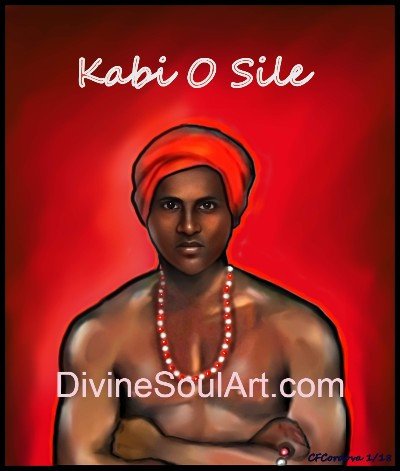
In Santeria, orisha Chango is synonymous with the Catholic Saint called Saint Barbara, illustrating the syncretism between Changó and Saint Barbara.
Saint Barbara

Chango is the most popular of all the African orisha deities. He is associated with fire, thunder, and lightning and symbolizes courage, physical strength, vigor, power, and passion. Chango carries a double-edged axe, which represents swift and balanced justice.
According to Migene Gonzalez-Wippler, Chango is depicted as "an incorrigible woman chaser and a lover of food and dance."
Chango is the son of Obatala and the adopted son of Yemaya. He has three wives: Oba, Oshun, and Oya.
His feast day is December 4, his colors are red and white, his day of the week is Friday, and his number is six. The planets associated with Chango are the Sun and Mars.
His favorite foods are apples, yams, corn, peppers, and bananas.
Luisah Teish recommends purchasing a double-headed axe or the symbol of Aries, the Ram, and placing these items on your altar to represent Chango. She states that the double-headed axe reminds us that life is a "double-edged sword," and the symbol of Aries reminds us of Chango's power.
ELEGUA
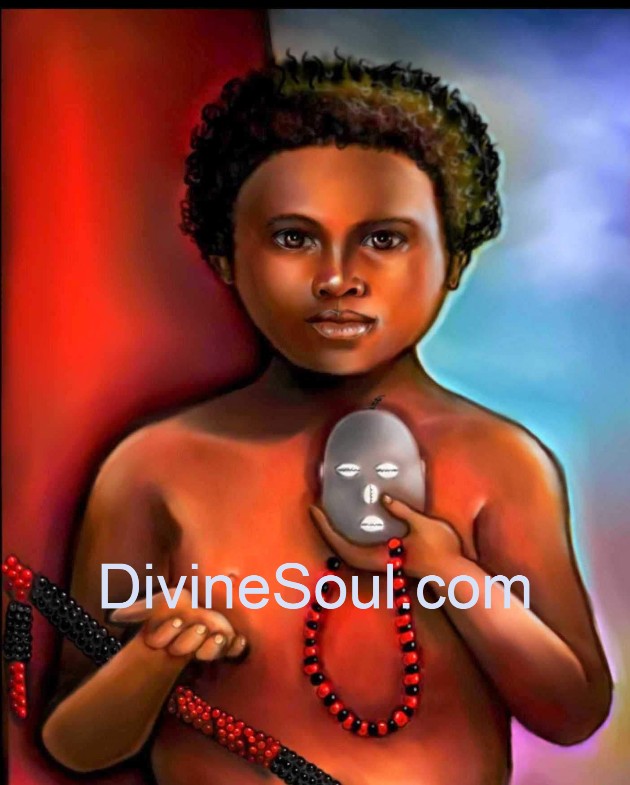
Sometimes, orisha Elegua is associated with Nino de Atocha because of its childlike image, playing a significant role in santería practices.
El Nino de Atocha/ Holy Infant of Atocha
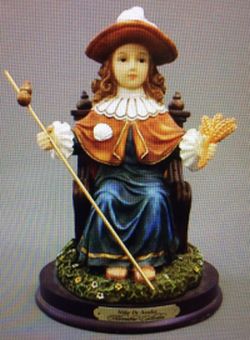
Elegua is considered one of the most important Orishas in the Santeria religion. Ceremonies in Santeria begin and end with Elegua, as he is the ruler of all crossroads.
The symbol of Elegua usually comes in the form of a cement head, a stone, a coconut, or a seashell, with cowrie shells used to denote the eyes, nose, mouth, and sometimes the ears.
His day of worship is Monday, and offerings of candles, sweets, rum, and cigars are usually made. Elegua's colors are red and black, his number is three, and his planet is Mercury.
OYA
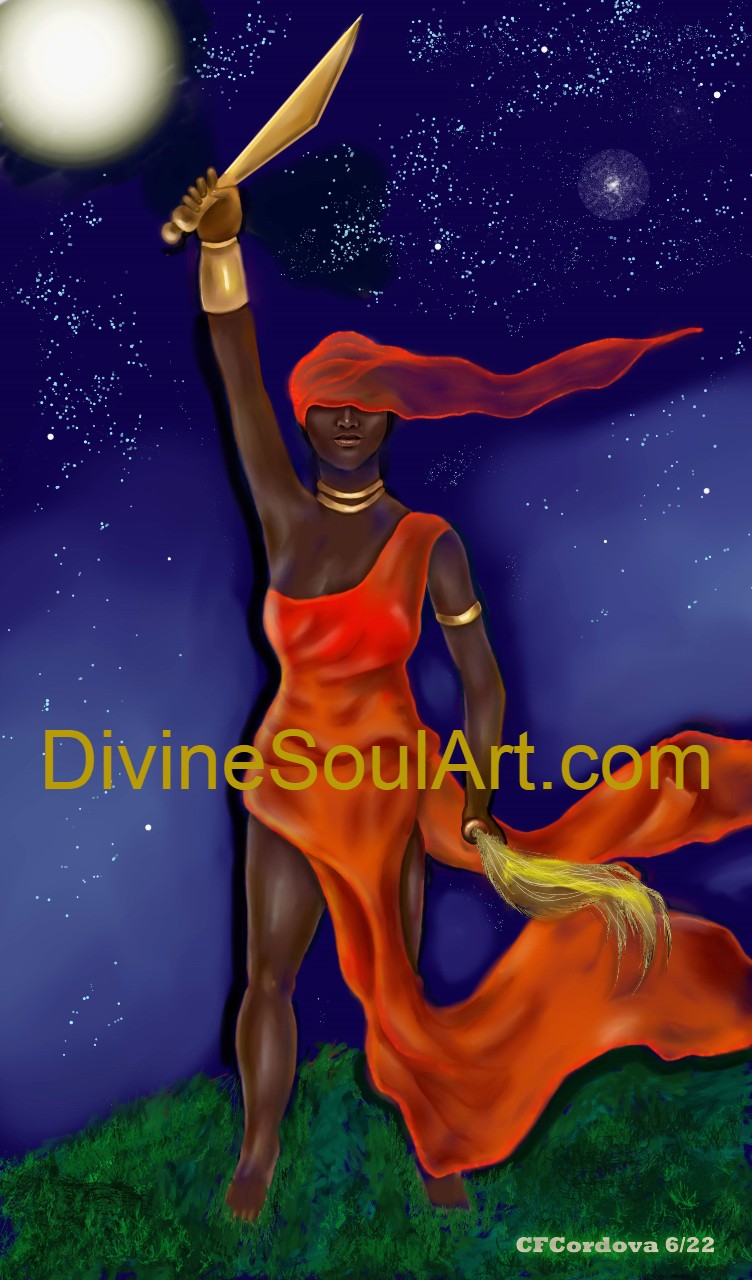
OYA
In Santeria, Oya is synonymous with the Catholic Saint called Saint Teresa of Jesus.
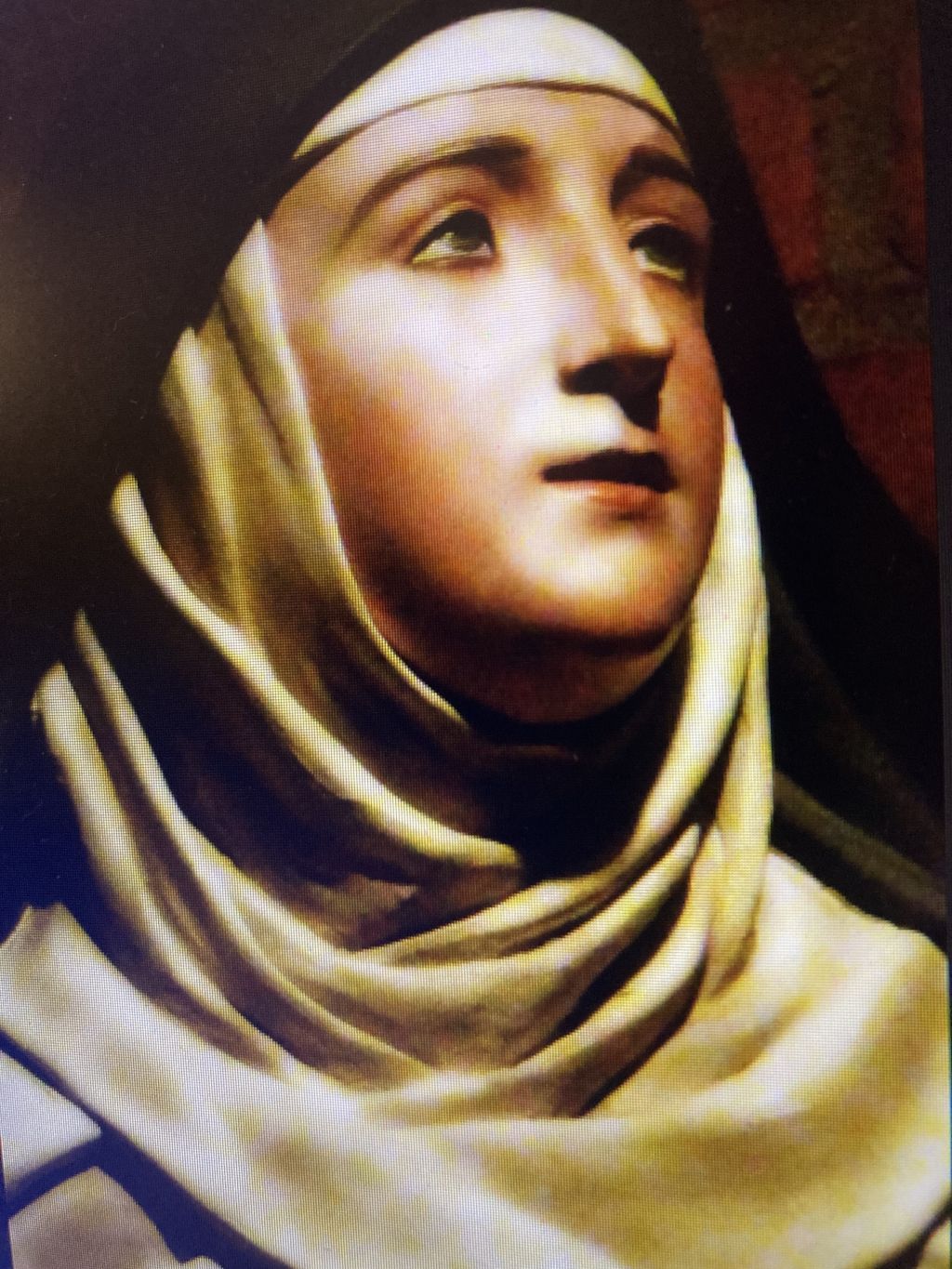
Oya's significance is deeply rooted in Yoruba culture, where she is revered as a powerful deity who rules over storms, lightning, and wind.
She is seen as a symbol of strength, bravery, and guidance. People often turn to her for protection during difficult times or to help overcome challenges and transitions. It's important to note that, like other orishas, Oya has both positive and negative qualities.
In addition, she owns all cemeteries and is believed to guide souls to the afterlife.
Chango's third wife, Oya, is known for her control over fire, fierce warrior nature, and sometimes aggressive behavior. She is often depicted holding a sword; some believe she wields it to remove obstacles and bring about change.
Her feast day is February 2; her color is dark red, and her number is nine.
Artistic Expressions of Orisha Worship
Orisha worship has inspired a vibrant array of artistic expressions, reflecting the deep cultural and spiritual significance of these deities. In Cuba, the Afro-Cuban tradition of Santería has profoundly influenced the development of popular music genres. Musicians often incorporate rhythms and melodies associated with specific Orishas, infusing their music with the spiritual energy and cultural heritage of their ancestors.
Beyond music, Orisha worship has also left its mark on visual arts. Artists create stunning paintings, sculptures, and textiles that depict Orishas and other figures from Yoruba mythology. These works often feature vibrant colors and dynamic compositions, capturing the energy and power of the deities they represent. The visual representation of Orishas serves not only as a form of artistic expression but also as a means of preserving and celebrating cultural identity.
The artistic expressions inspired by Orisha worship are a testament to the enduring power and relevance of these deities. They highlight the ways in which cultural and spiritual traditions can inspire creativity and foster a deeper understanding of our shared heritage.
Conclusion: The Significance of Orishas in Afro-Caribbean Culture
Orishas hold a central place in Afro-Caribbean culture, serving as powerful symbols of African heritage and identity. Through their association with Catholic saints and other figures from European mythology, Orishas have become an integral part of the complex and multifaceted religious landscape of the Caribbean and other parts of South America.
Despite the challenges and contradictions of syncretism, Orisha worship continues to thrive in Afro-Caribbean cultures, inspiring artistic expressions and shaping the spiritual practices of millions of people. As symbols of resistance and resilience, the Orishas embody the enduring power of African culture and emphasize the importance of determination—to never let go of your beliefs, no matter your circumstances.
In Cuban society, the Orishas have become a vital part of the country’s cultural identity, reflecting the complex and often contradictory nature of Afro-Caribbean culture. Through their association with Catholic saints and other figures from European mythology, the Orishas highlight the syncretic nature of Afro-Caribbean religion and the intricate relationships between African and European cultures in the Caribbean.
In conclusion, the Yoruba tradition and Orishas are essential to Afro-Caribbean culture, representing African heritage and identity. The spiritual beliefs in Yoruba culture and the Orishas will continue to flourish indefinitely.
May the blessings and energy of the Orishas be with you.
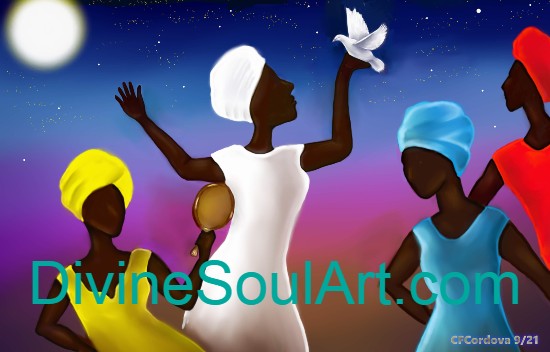
orisha gods, orisha gods, orisha gods, orisha gods
African Orishas Artwork
Click below and views more than 600 pieces of spiritual artwork

Spiritual Books
If you enjoy the articles on this website, you will also appreciate the short stories in the books below. Click here and continue the journey.
